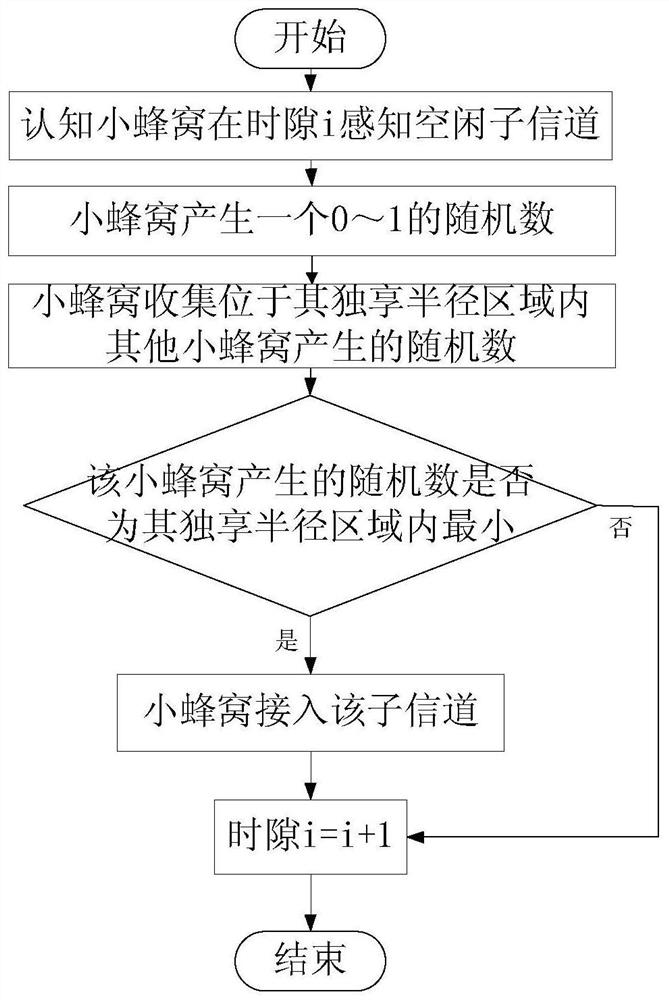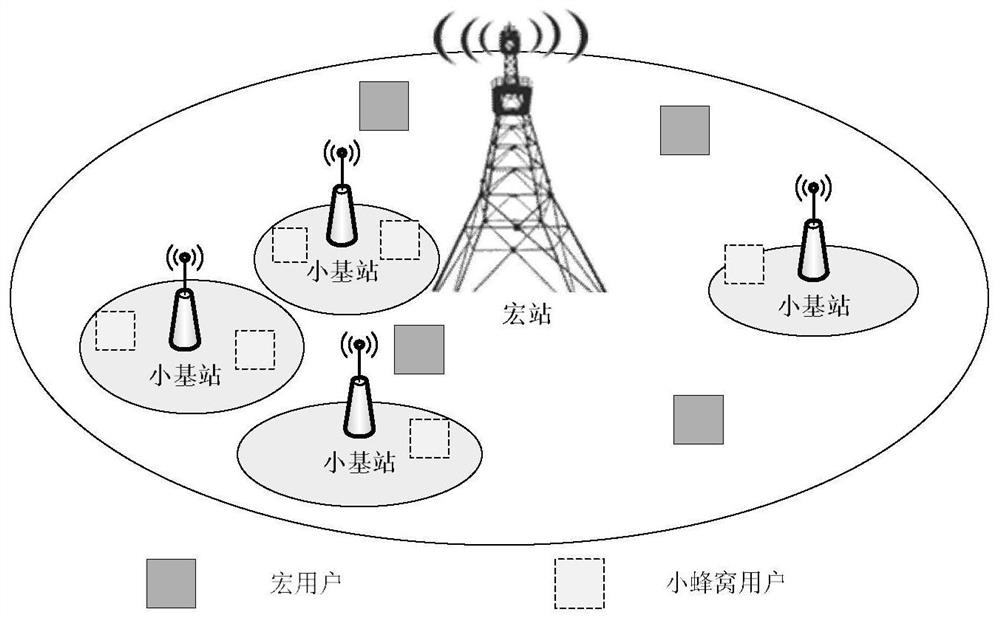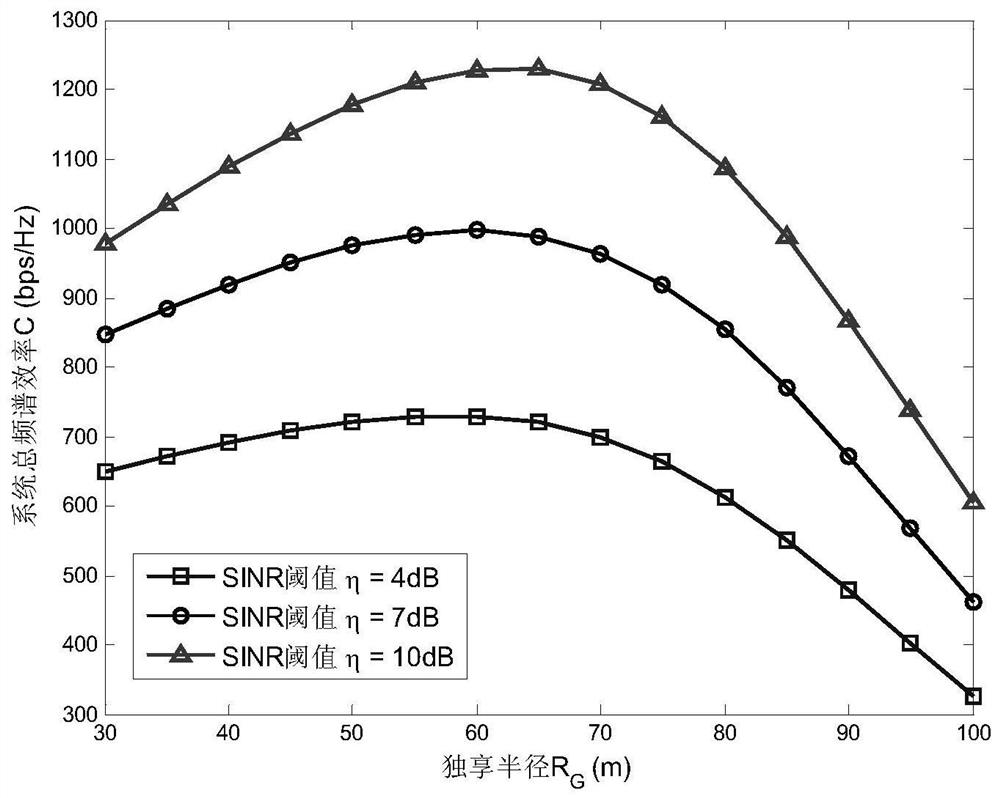A Cognitive Interference Coordination Method for Dense Cellular Networks Based on Random Geometry
A technology of interference coordination and random geometry, applied in transmission monitoring, electrical components, orthogonal multiplexing systems, etc., can solve problems such as differences in the number of users carried by small cells
- Summary
- Abstract
- Description
- Claims
- Application Information
AI Technical Summary
Problems solved by technology
Method used
Image
Examples
Embodiment Construction
[0058] The present invention will be further described below in conjunction with accompanying drawing.
[0059] A Cognitive Interference Coordination Method for Dense Cellular Networks Based on Random Geometry, such as figure 1 As shown, it specifically includes the following steps:
[0060] Step 1: Establish a cognitive interference coordination mechanism, including the avoidance of cross-layer interference and the coordination of same-layer interference;
[0061] Step 2: Calculate the SINR of macro users and small cell users;
[0062] Step 3: Calculate the average spectral efficiency of any specific channel in the dense cellular network;
[0063] Step 4: Design the optimal exclusive area radius, realize the trade-off between spectrum reuse rate and interference coordination, and improve the spectrum efficiency of the dense cellular network.
[0064] Dense small cell network architecture such as figure 2 As shown, consider a macro cell area with a coverage radius of 1Km,...
PUM
 Login to View More
Login to View More Abstract
Description
Claims
Application Information
 Login to View More
Login to View More - R&D
- Intellectual Property
- Life Sciences
- Materials
- Tech Scout
- Unparalleled Data Quality
- Higher Quality Content
- 60% Fewer Hallucinations
Browse by: Latest US Patents, China's latest patents, Technical Efficacy Thesaurus, Application Domain, Technology Topic, Popular Technical Reports.
© 2025 PatSnap. All rights reserved.Legal|Privacy policy|Modern Slavery Act Transparency Statement|Sitemap|About US| Contact US: help@patsnap.com



